If I’m truly honest with myself the claim that our trip to Dover was all about the Adonis Blue may have been ever so slightly exaggerated. Yes it was my primary draw but one bolstered no end by the presence of so much history along that particular stretch of coastline. Being our closest point to France the White Cliffs formed an integral part of the country’s defences during both world wars and still carries scars from that period to this day. Gun emplacements, barracks and even a nineteenth century prison are all clearly visible at various points and represent exactly the way I like my history displayed. Museums and restored properties all have their place but for me nothing beats exploring an abandoned site that has been left to decay naturally over time. Instead of being presented with all the information up front you’re left to piece things together from what remains, something I’ve been enjoying since my very earliest days. The second world war is often the best period for this despite much work in the 1970’s to erase many structures as part of Project Eyesore, Fan Bay Deep Shelter being one of them.

The story goes that on a visit to Dover in July 1940 Winston Churchill was outraged to see enemy shipping traversing the Dover Straight completely unopposed. He demanded something be done immediately and thus began the installation of three anti-aircraft guns at Fan Bay. These were six inch breach loaded guns with a reach of fourteen miles and a surrounding underground shelter designed to house up to four officers and one hundred and eighty five men. Unusually the original intention had been for these men to live in the tunnels permanently, a rather unappetising proposition at twenty three meters depth with no access to natural sunlight. Barely had they moved in when the troubles started. Despite the belief that being cut out of chalk would mean the tunnels remained dry, condensation quickly built up on the metal corrugated sheeting used for lining. This seeped into clothing, paperwork and pretty much everything else which when added to the smoke from numerous cigarettes led to a truly fetid atmosphere. The installation of a ventilation system did little to improve things and within a month the whole idea had been abandoned and a traditional above surface camp constructed. Fan Bay Deep Shelter still had a part to play though as protection when enemy artillery would bombard the emplacement for often days at a time. At this it succeeded superbly and during the whole of the second world war only two lives would be lost there.
Following the declaration of peace Fan Bay was abandoned and in the 1970’s became buried under hundreds of tonnes of spoil thanks to a campaign by local residents who wanted all remnants of the war removed. Fast forward to 2012 and in steps the National Trust having purchased this stretch of coastline and in their words “re-discovered” Fan Bay. A great marketing tool for sure but I find it hard to believe that the tunnels existence would have been unknown to them given that I’ve been looking at photos from unauthorised explorations of the tunnels for at least the last ten years or so. Indeed local youths have been gaining entrance since the 1950’s. What I don’t think anyone could have expected though was just how much would remain and the quality of its condition. Once the original entrance had been unearthed a team of dedicated volunteers spent the next three years removing concrete, rubble and spoil until the entire complex was again accessible. Along the way they made remarkable discoveries including two first world war listening dishes believed destroyed, handmade hooks, ammunition and even one soldiers football pools entry which never made it into the post due to two days of sustained shelling by the Germans. It wasn’t a winning pick before you ask. The results of all that effort is that today it is now possible to take a guided tour and experience Fan Bay virtually unchanged from when it was last in operation.
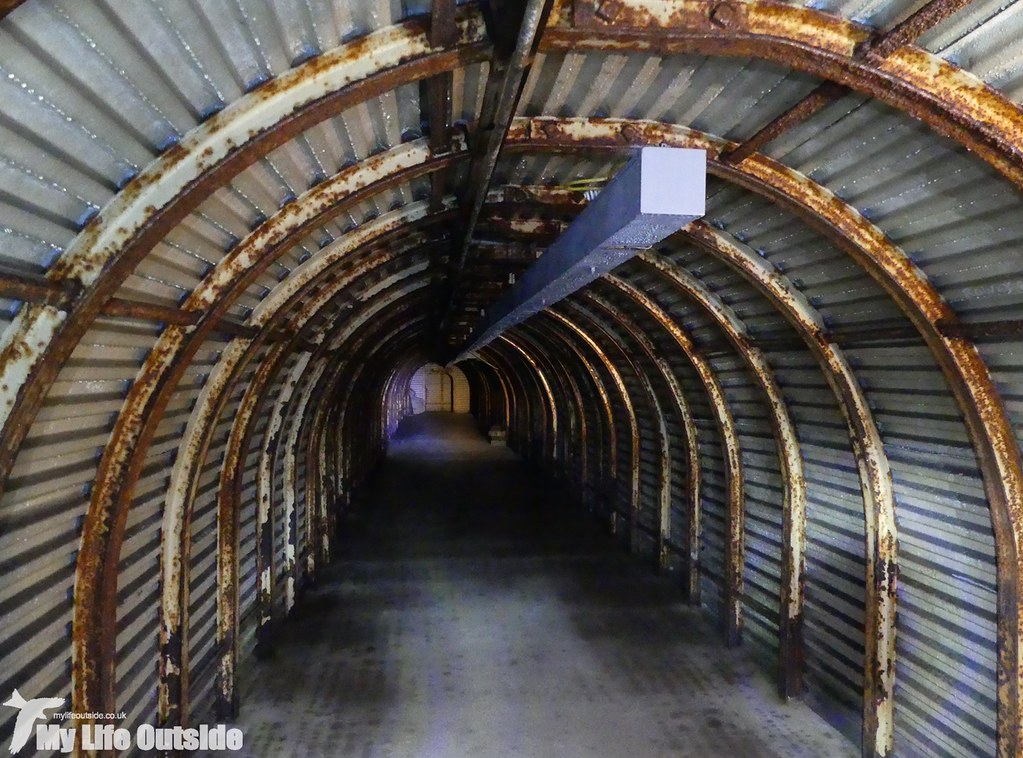
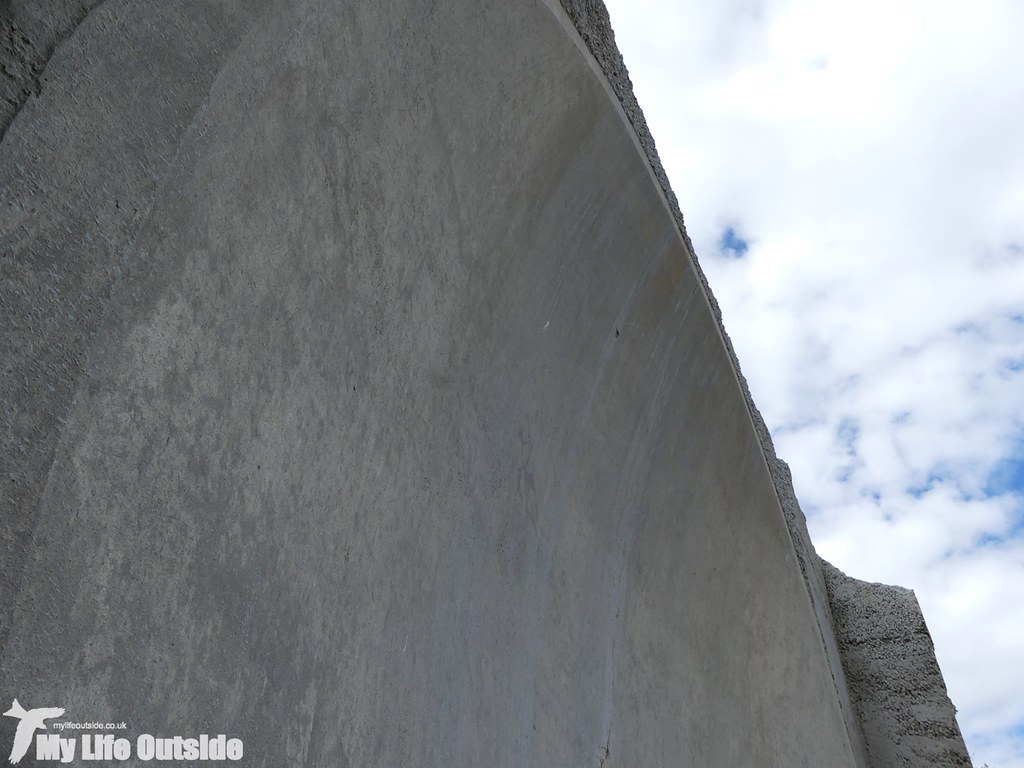
One of two listening dishes on site from world war one, reused as the toilets for Fan Bay. Very simply these dishes were used to focus sounds onto a microphone to which a person would listen for half hour periods. The reason for such short sessions? Quite simply it was very loud and strenuous work, literally listening to the war unfolding across the channel and picking out sounds that could present a threat. The very best could identify a type of plane, its direction of travel and speed all from sound alone. A valuable early warning system in the days before radar.
I loved every minute of being underground and must mention a couple of specifics which stick in my mind. The first is one of the original water tanks which was found still full of water with a working tap and no leaks. I wouldn’t recommend taking a drink however. The second is the quality and volume of period graffiti present, much of it carved into the soft chalk tunnel walls by soldiers just trying to pass the time. In fact Fan Bay is believed to house the largest underground collection of such markings to be found anywhere. We only got to see a small selection but they helped transport us back to that time like nothing else ever could.
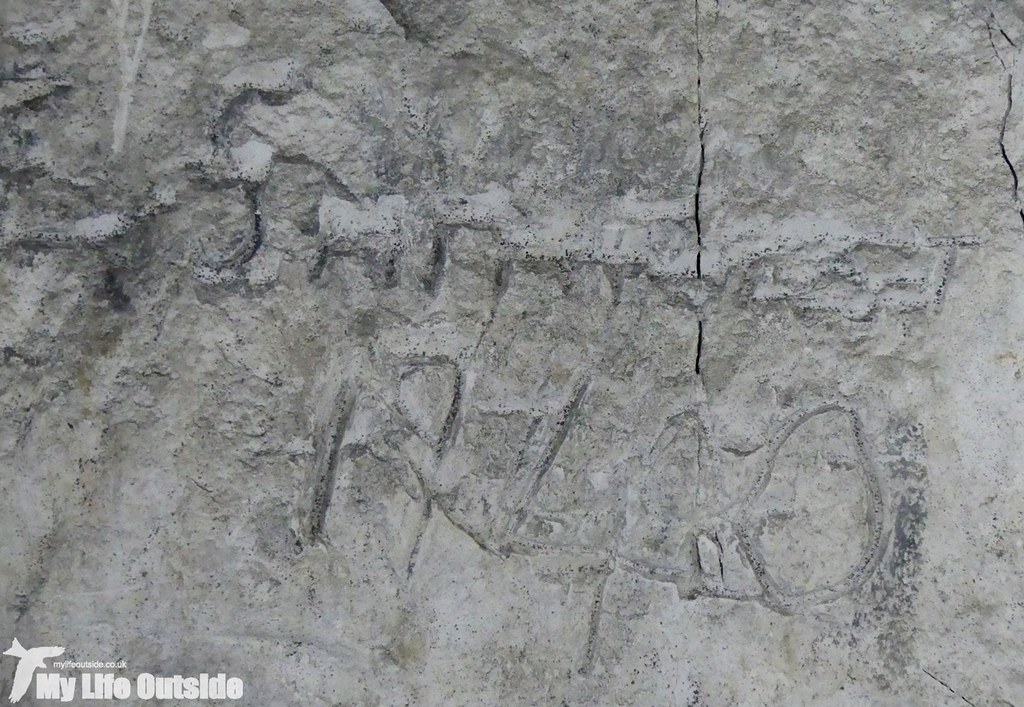
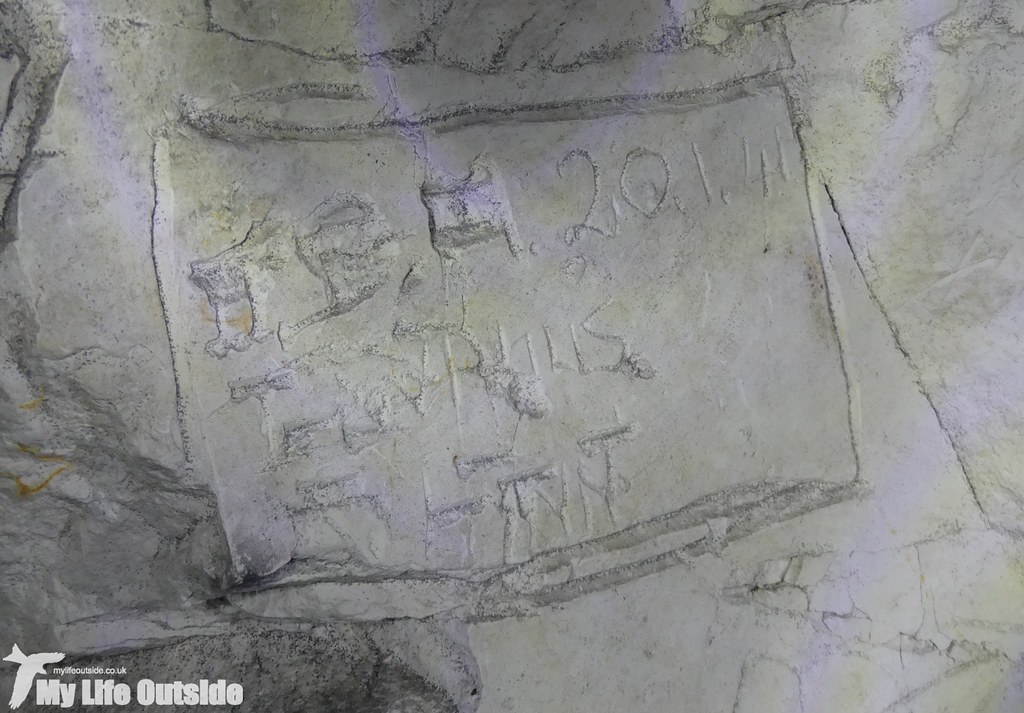


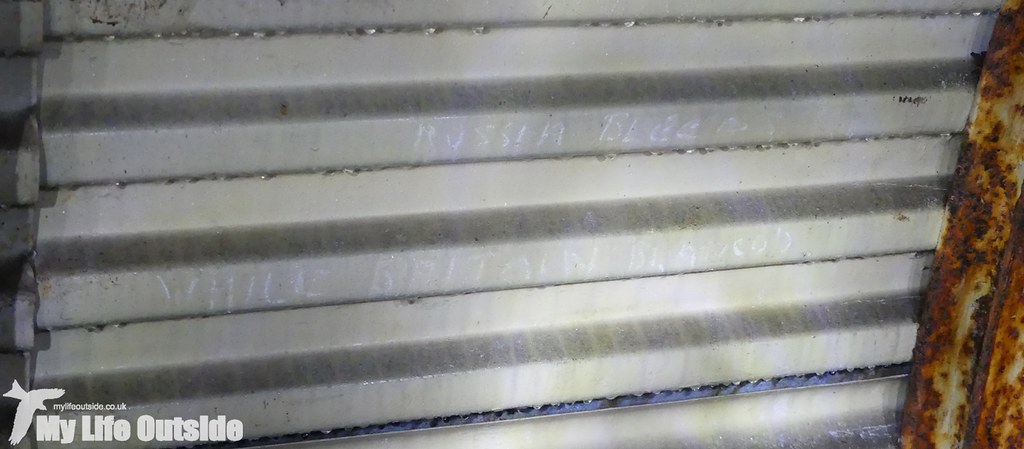
Russia bleeds while Britain blanco’s
A soldiers view on his involvement in the war captured for prosperity. Blanco was a substance used in the cleaning and colouring of a soldiers kit. The insinuation that this was not a worthwhile use of time whilst others were being killed in battle is clear.
Now normally at this point I’d try and include a little nature but surely that’s an impossible task when exploring underground? Well apparently not. In places the tunnels are unlined and where necessary contain wooden supports to hold the roof up, a section of which housed quite a remarkable sight. Growing in total darkness was a spectacular fungi display the likes of which I have never seen. The exact species involved are currently unknown to me but boy were they impressive. Completely poisonous too apparently so best not to get too close.
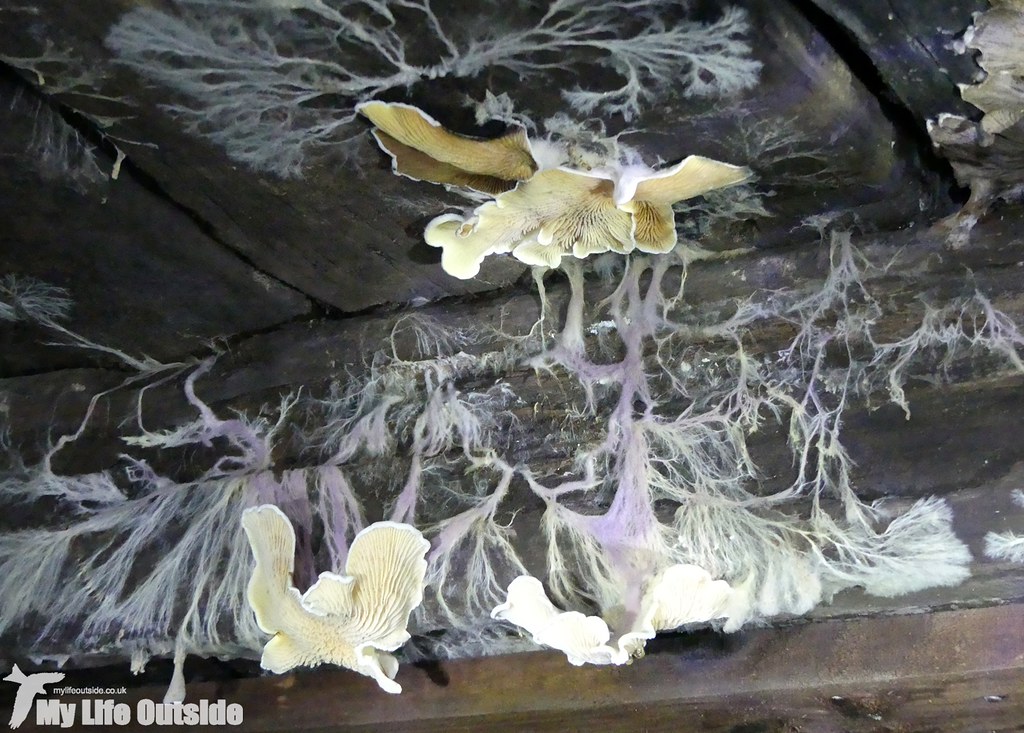
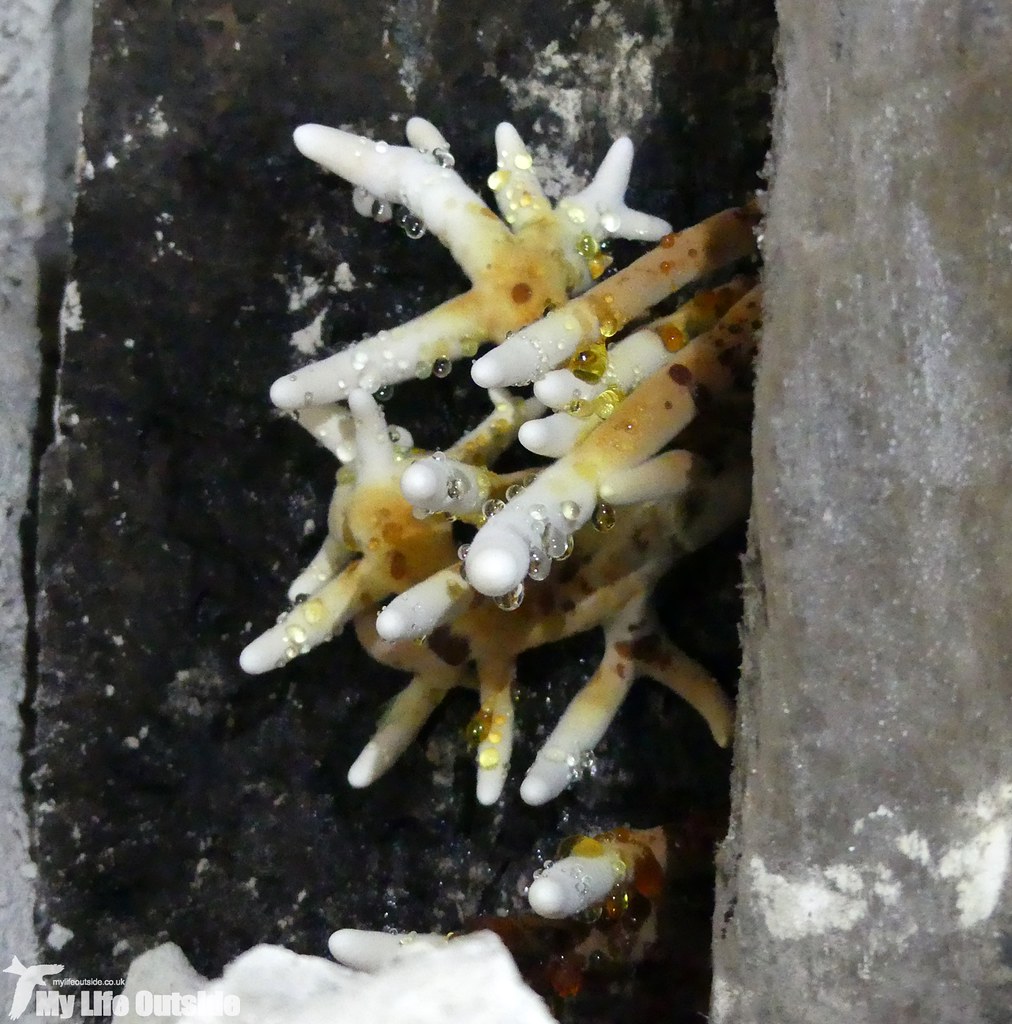
Emerging back into the sunlight I felt I had a much better connection with the actual people behind Fan Bay than I’d had before heading underground. A remarkable place, project and experience. Well worth a visit.



0 Comments